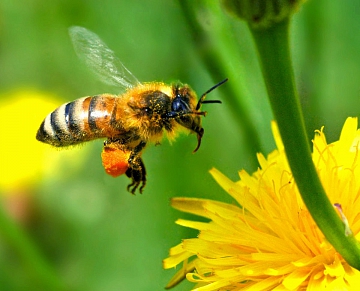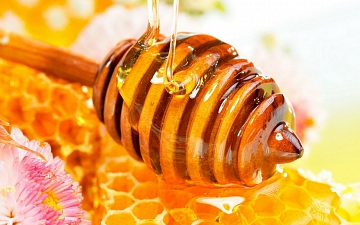ASU Laboratory for Bioengineering has conducted an expert evaluation of Altai and Chinese honey
“Altai” honey that is sold in the shops does not meet the key requirements of the All-Union State Standard. Beekeepers of Altai Krai strive for the technique, which would help to distinguish Altai honey from any other sweet product, to be adopted at the governmental level. It is one more step in fighting the counterfeits.
Oak, chestnut or coniferous honey does not exist, but shops located in the European part of Russia sell such honey and  say that it is from Altai. Altai biologists and beekeepers have spent 2 years to stop this nonsense. The biologists have proved that the infrared spectrum of Altai honey is unique. The beekeepers have received the certificate from the Federal Service for Surveillance on Consumer Rights and Human Wellbeing on the basis of biologists’ discovery. Now “Altai honey” brand belongs to Altai Krai Beekepers Society. The news had spread rapidly all over Russia, and the majority of the producers have taken away their false Altai honey.
say that it is from Altai. Altai biologists and beekeepers have spent 2 years to stop this nonsense. The biologists have proved that the infrared spectrum of Altai honey is unique. The beekeepers have received the certificate from the Federal Service for Surveillance on Consumer Rights and Human Wellbeing on the basis of biologists’ discovery. Now “Altai honey” brand belongs to Altai Krai Beekepers Society. The news had spread rapidly all over Russia, and the majority of the producers have taken away their false Altai honey.
ASU Laboratory for Bioengineering has several samples of Chinese honey, which have been brought from China by employees.
Maksim Kutsev, Head of Bioengineering Laboratory of Altai State University:
“The complex of sugars, typical for the natural honey, is created artificially. Of course, it has no healthy properties. Although technologists find one property useful: it does not crystallize into sugar.
On a related note, we asked the biologists to test Altai honey samples, which have been bought in a food store. Buckwheat honey does contain buckwheat, but there is more sunflower in it. Then we have found linden in highland honey. So what is its origin? We have found the answer to this question in the Altai biologists’ spectral database: we could not identify it two years ago as well.”
Our beekeepers have to make one last step to put out of the market all the fake Altai products and do everything legally correct. Today you can disperse any sample into spectrum, look it up in an enormous database of Altai biologists and identify whether it was gathered in Altai or not. But this technique must be officially acknowledged by the government.
 Tatiana Zelenina, Head of the Altai Krai Department of Food Processing and Pharmaceutical Industries:
Tatiana Zelenina, Head of the Altai Krai Department of Food Processing and Pharmaceutical Industries:
“At the present moment we continue to work with our university. Not us, but “Altai – Region of Honey” Society. They are developing the All-Union State Standard for the new technique of honey quality identification, because the current standard does not always allow identifying correctly whether it is Altai or Bashkir honey.”
Altai Beekeepers Society has already submitted the necessary documents and is waiting for the results, which are going to come this spring. Until then, they protect Altai honey brand as best they can.